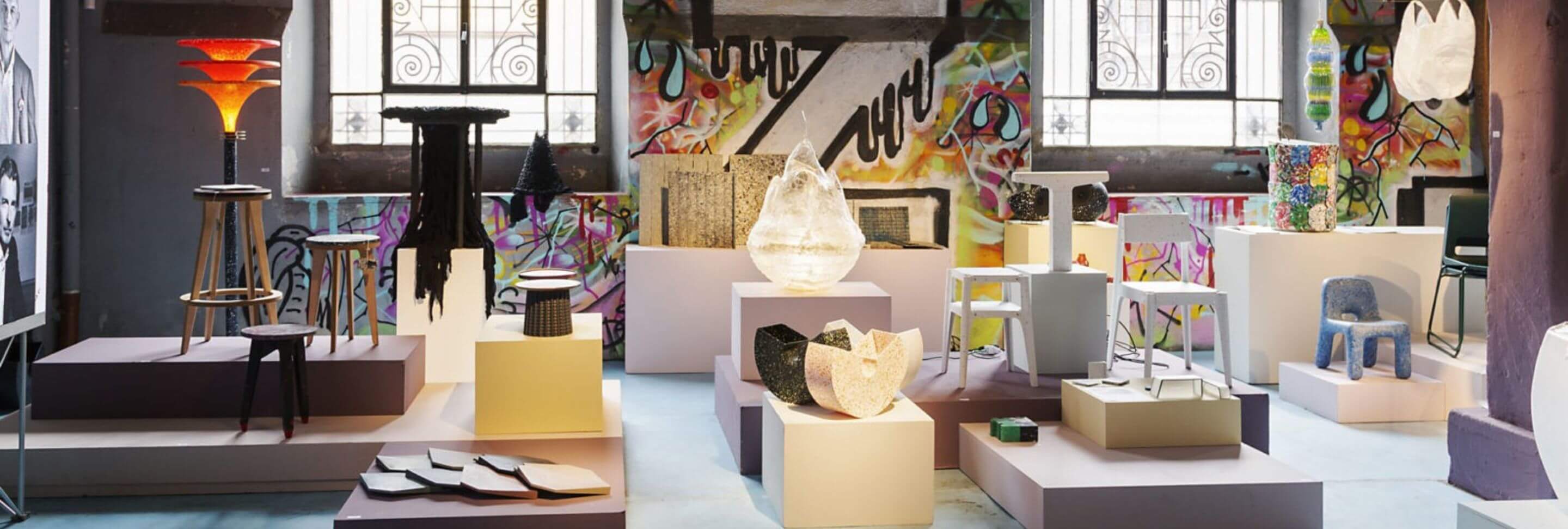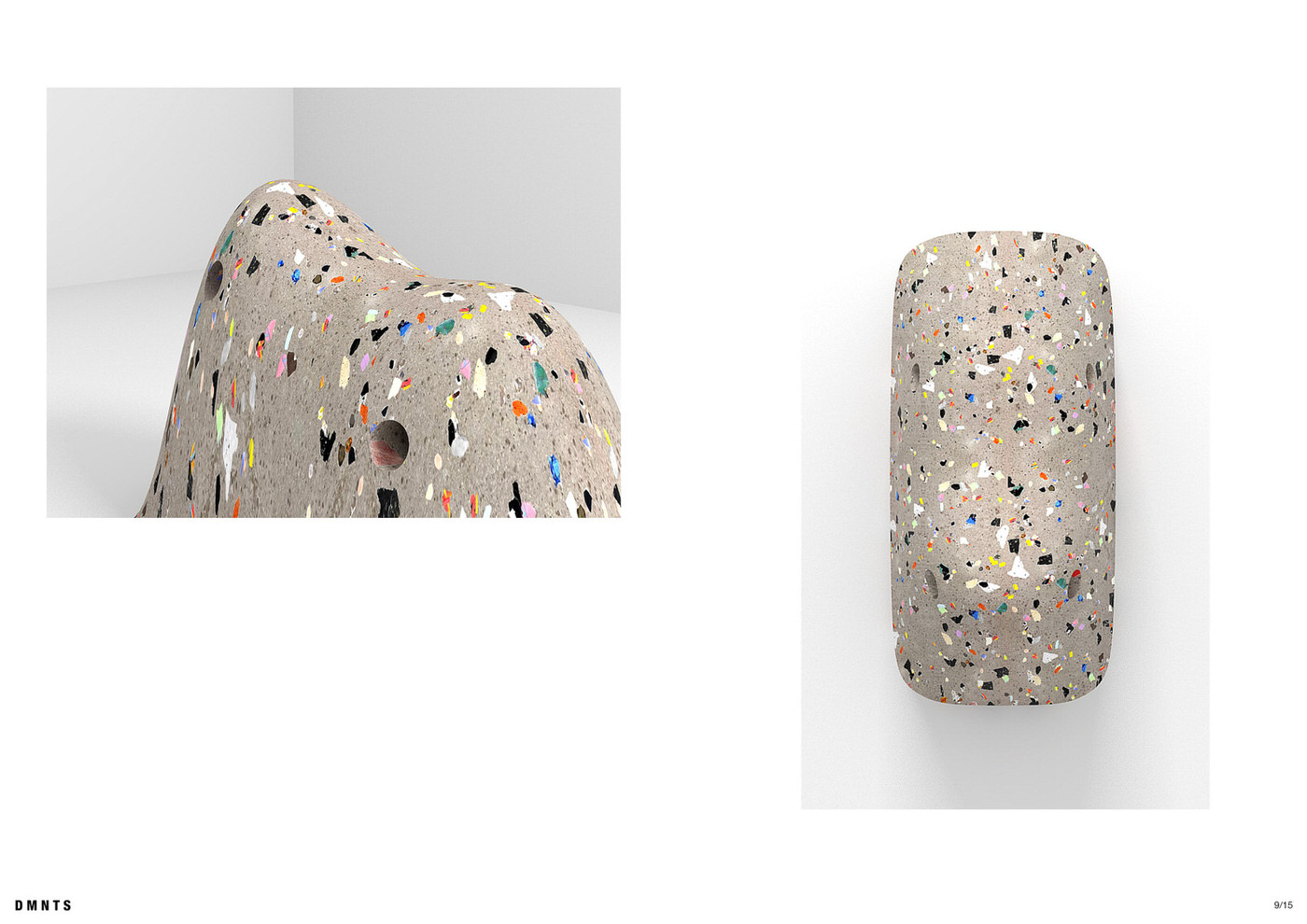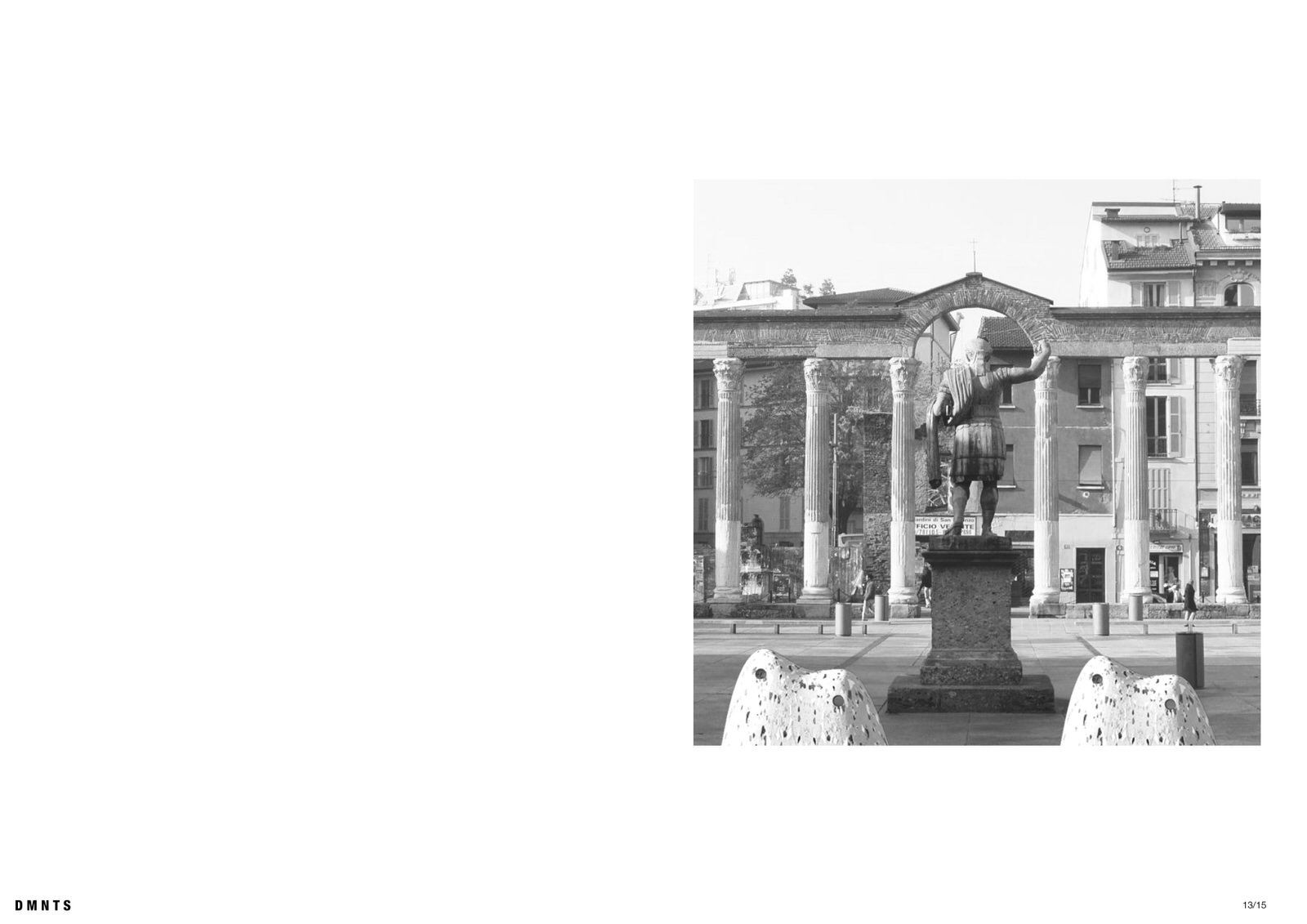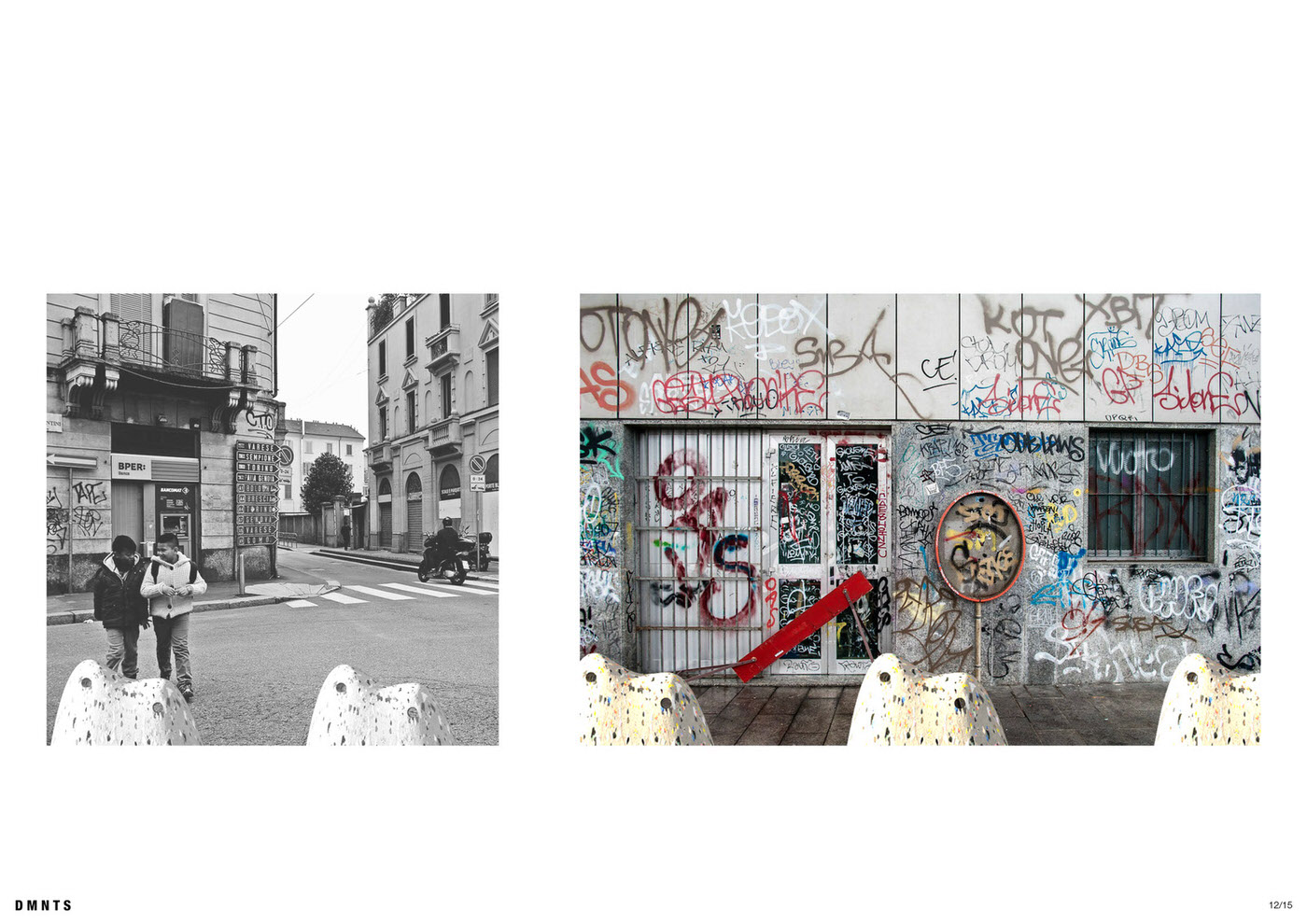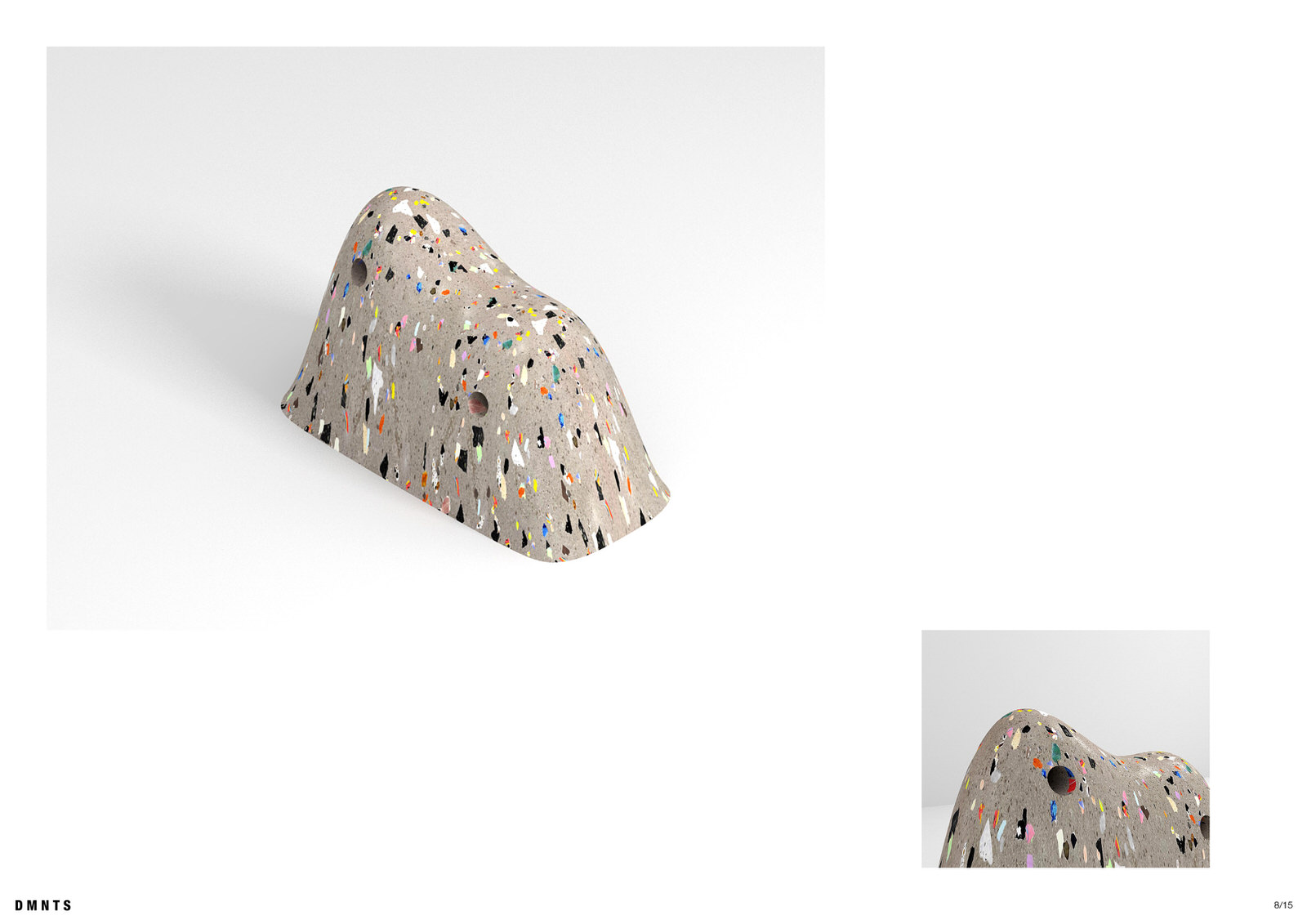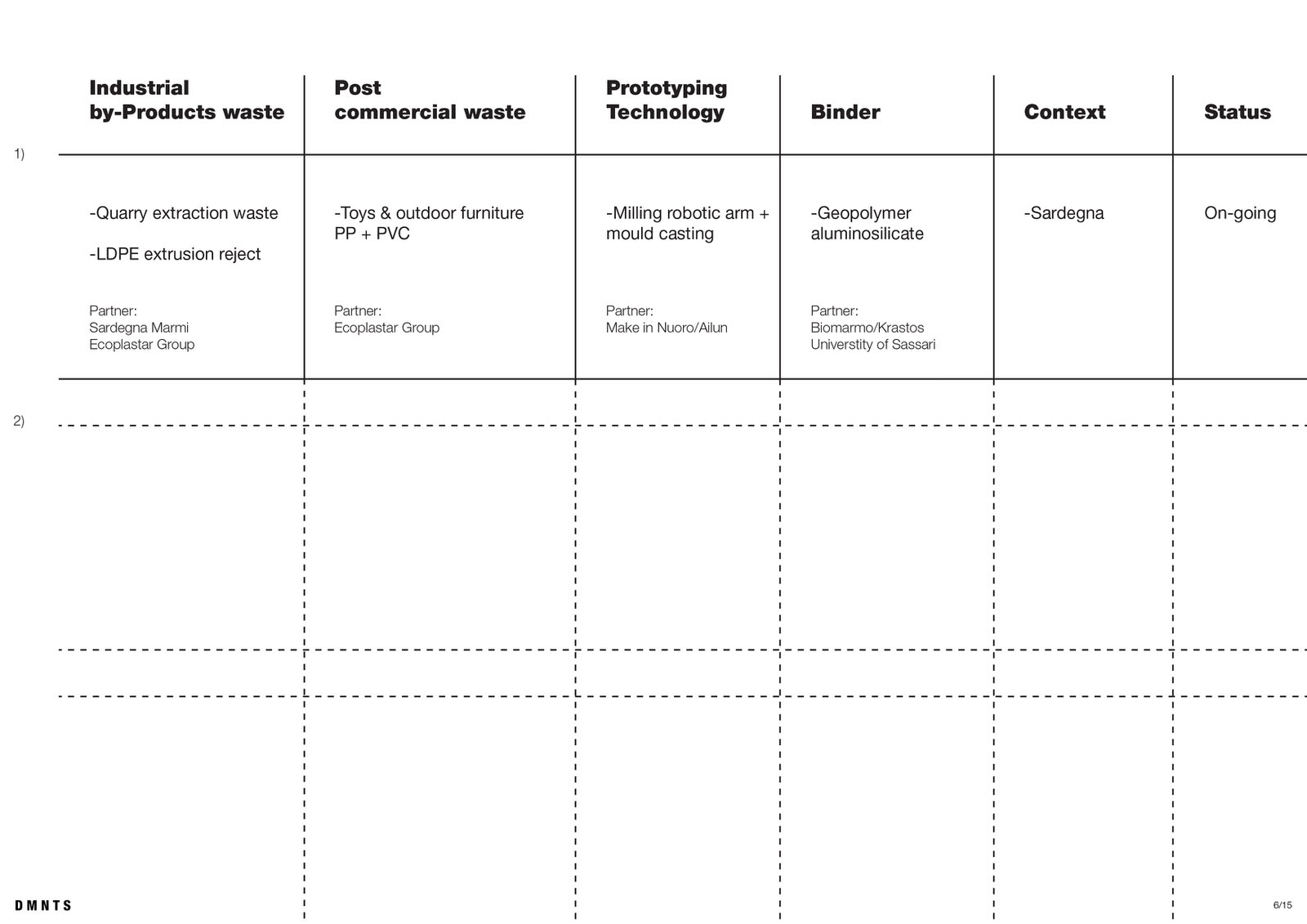CENE – urban purpose
Urban and Public Furniture Design
CENE comes from the ancient Greek word Kainos (καινός), and means “new.” This project is part of the multidisciplinary research “Design The Anthropocene” which aims to use design as an explorative tool to connect scientific research, advanced technologies and industry, to embody an informed response to a precise anthropogenic effect on ecology. Mining and quarrying together with the uncontrolled production of plastics and the increasing release of CO2 in the atmosphere represent activity on a global scale that has led to a radical transformation of the ecosystem and the natural environment. CENE urban-purpose” is the prototype of a potentially industrialised system that can be applied in several contexts, using the waste found in the place as a compositional basis of new material, to become a resource and no longer refusal. For this reason, each context examined will have a specific local material, results of specific applied research. The first case study is in Sardegna, the material research process is based on the reuse of waste and scrap derived from the extraction of stone materials in the marble district of Orosei to post-commercial and industrial non-recyclable plastic waste. Through a sustainable binder, the Geopolymer, the extractive and plastic waste will become part of a single advanced material. Geopolymers are a class of alumino-silicate materials with the potential to become the best alternative to Portland cement. These materials maintain better performance than traditional cementitious binders, require moderate energy for their production, and can be produced from waste or by-products of industries such as rice husks, quarries & mining, and many others… For this reason, Geopolymers have the potential to reduce greenhouse gas emissions by 80% compared to Portland cement. Thanks to the collaboration with the researchers of the Department of Chemistry and Pharmacy of the University of Sassari, whose aim with the project Biomarmo is to exploit the waste from the extraction of stone materials (but not only) with Geopolymer. It will be possible to develop a new advanced material not available on the market, consisting of 80% post-consumer plastic and stone waste. Using the Geopolymer as an alternative to Portland as a binder for underutilized scraps and non-recyclable waste. We determine a complete decrease of CO2 emissions from manufacturing to shipping, as well as avoiding landfill waste. This is combined by mechanical grinding without sorting of the plastic materials, adds considerable economic savings. With the Ecoplastar Group, the only company in Sardegna that can recycle plastic to be reused for industrial purposes, a series of post-commercial multi-material waste and rejection from the internal recycling process, were identified. Outdoor furniture along with toys composed mainly of a mix of PP and PVC (of low quality) are the first products identified with the company as problematic both for internal recycling and in terms of the commercial release of the grind. The other material, otherwise destined for landfill, is the waste from the LDPE extrusion recycling process. This multi-coloured material has good physical characteristics, so it will just be crushed like the previous one, to be also used as an inert. The “Biancone Orosei” refusal obtained from the extraction of marble blocks, unused or underutilized, becomes with CENE a precious component. The annual production in the Orosei’s quarry is about 1.2 million cubic meters. More than 75% of this extracted material is made up of waste and scrap, with enormous economic and environmental problems. The refusal material will be provided by Sardegna Marmi, a partner company in the Biomarmo research project. Once the different wastes and scraps have been crushed, the mixture will be composed with the following proportions: Aluminium-silicate-based geopolymer (binder) 20% + PP+PVC mix & LDPE waste (inert) + stone quarry refusal (inert) 80%. Within the laboratories of the University of Sassari, the three elements will be amalgamated and transformed into a single semi-liquid compound. The mixture will be poured inside a mould designed so that it can be reusable for future prototyping experiments. The mould will be built through a robotic arm for wood milling, in the Make In Nuoro digital fabrication lab. With whom there is a structural collaboration for this project. The liquid mixture poured into the mold will immediately begin the petrifying process, becoming a solid, compact volume with performance characteristics superior to cement. Even under continuous physical and environmental stress, the Geopolymer conglomerate can count on service life of at least 100 years. At the end of the cycle, it will be possible to completely recycle the object, crushing it and reusing it for the same urban purpose. With the uncontrolled production of waste and the increasing ejection of CO2 in the environment, the Geopolymer if applied as an aggregator starting from this urban typology but not only… has the potential to dramatically lower our ecological footprint on the environment. CENE designed on the needs of the contemporary city, is a pure volume with a smooth archaic geometry, a result of compositional research focused on the development of an urban multi-functionality. Its size and specific weight make it a monolith adaptable to different urban scenarios. Its first function is bollard cars, but at the same time, it can be a toy for children by transforming itself into an abstract rideable animal. It can be a structure for skateboarding, a bike locker and finally a seat. CENE with its shape and proportions fits into different urban contexts, in public space from the park to the Piazza, as an aggregation element and in the street as a dividing volume between the cars and sustainable mobility. The holes placed transversally have the function of a structural feature in the movement, positioning and modularity of the city’s item, but at the same time, they can become a playful figurative element for kids. The texture is defined by a contrast between the chiaroscuro of Biancone di Orosei, which immediately declares its origin, and the plastic fragments rhythmic on the surface and embedded within the volume. CENE has the ambitious purpose of addressing global environmental issues, but specific to a context. The elaboration of possible viable solutions through collaboration between design, scientific research, technology and industry, is combined with the desire to induce with this project for the city, a critical awareness in the citizen on how the world is and how it will be in the light of the Anthropocene.
